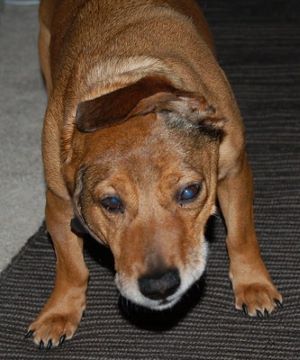Anesthesia is a standard medical procedure for both humans and our four-legged furry pals that essentially puts them to sleep pre-surgery.
As unpleasant as it may be, anesthesia plays a vital factor in the surgery process, and of course, to ensure everything is as stable as a table. For dogs, many pet owners (we included) may have had concerns when our dogs start to shake after a successful surgery.
You might be thinking: “Is this normal?”, “Is my dog alright?” or “How long will the shaking last?” Right?
Don’t worry; we have you covered with everything you need to know about anesthesia and its effects on dogs. Let’s get right to it.
Why is my dog shaking after anesthesia?
Shaking is, in fact, a very common side effect or reaction after your pal has been given anesthesia, which is a sign that the anesthesia is wearing off. During your dog’s post-surgery, it is essential to note that your furry friend here has no clue that they just had surgery done, so stay close to keep them cared for.
Another reason why shaking occurs is anxiety, which we, too, may have experienced before. We recommend that you avoid hovering over your furry companion to avoid amplifying their anxiety.
What should I do?
Aside from giving your pup the prescribed medications from your professional vet, there are a few things you can do at home to make your dog more at ease from the post-surgery pain.
Environmental shifting. Changes in your loyal companion’s surroundings are a huge boost in their recovery process.
Some of these changes can be simple tweaks, such as placing extra padding on your pal’s bedding area, elevated food dishes (for a more convenient reach), and anti-slip surfaces to keep them safely balanced.
Suppose your home has hardwood or tile floors; we recommend purchasing some budget-friendly rugs or rubber matting online or in a local hardware store to help your furry friend move here and there.
Activity restrictions. As much as you would love to take them on your weekend stroll to the local park, that will have to wait for their goodness sake. Though this may be a huge bummer for the two of you, resting immensely speeds up your pal’s healing process, especially in the first few days after surgery.
How does anesthesia work on a dog? How does it put them to sleep?
We’ve all been told that getting anesthesia basically puts you to sleep.
Though it is true, there’s a little more to that. Anesthesia gets to work once medical drugs have been administered that essentially sings a lullaby to the nerve function (or depress it, as a fancier term).
Now, you should know two types of anesthesia: local anesthesia and general anesthesia. The difference between the two lies in what kind of medical procedure is being done.
If your furry friend requires minor surgery, local anesthesia will be used, knocking the nerves to numbness in a small area of the skin or tooth.
For major surgeries, general anesthesia is used. It puts your dog in a completely unconscious state that puts their muscles in relaxation mode and zero pain sensations as surgery is being carried out.
What are the other side effects of anesthesia?
Besides shaking or shivering, dogs may experience a few other side effects, especially within the first couple of days post-surgery. This includes behavioral changes and affected ability to control body temperature.
Behavioral changes are super common after being administered with general anesthesia, which typically sorts on its own after a few short days.
No matter how long your pal has walked and fully memorized where the kitchen and the couch are, they may seem like they have never been known the place, people, or even their other friends in paws.
During this period, it is crucial that you do not leave your little loved ones or other children unattended with your in-recovery-mode pal regardless of how trust-earning your dog is and always has been without anesthesia.
Your pal needs time to fully rest before they can return to their old, happy, and tail-wagging self, so please, and pretty please, be patient.
Due to their recovery process, your pal’s body temperature-controlling ability may be affected. But how? We’re glad you asked.
A handful of anesthetics may cause a few tweaks in the temperature set point in the brain, which results in your pal’s blood vessels near the skin to dilate which causes heat loss. On the other hand, general anesthesia may also affect your dog’s body-cooling mechanism, which causes slower responses to increasing environmental temperature.
We can give you the best recommendation to keep your furry companion in a mildly warm room for most breeds or a slightly cooler room for certain breeds like Huskies, for example.
How should I comfort or care for my dog after having anesthesia?
Whether in school or post-surgeries, the first days are always the toughest for both owners and our furry friend.
During this time, ensure that your pup has the whole day booked in for complete rest. So here are some ways to care for your dogs after having anesthesia.
Keep them in a warm spot on the floor, as their body temperature regulation may temporarily affect the following surgery.
As irresistible as it may be for dogs to actively move around, try your best to keep them stationary. Doing so prevents them from any unwanted injuries as they still have anesthesia in their system.
As for what your pal consumes and drinks, it is crucial that your dog drinks enough water. Please be mindful that your dog may still feel flustered from post-surgery and may require supervision when they drink, especially because they may unintentionally fall asleep on the water bowl.
How long before the effects of anesthesia wear off completely?
With modern medicine developing safer and reversible anesthetics, most anesthesia effects should wear off by the time of discharge, typically between 12 to 24 hours after anesthesia.
During this period, you might notice your pal being sleepier or more tired; rest assured, this is entirely normal.
Also, be sure to keep in touch with your vet for the next checkup to monitor your dog’s state and proceed from there until complete recovery.
Important note: If your dog shows signs such as unusual lethargy or difficulty in waking them up, please contact your vet immediately for professional aid and instructions.
What are the most common types of surgeries that require anesthesia?
Nothing is scarier than the vet telling that your furry pal needs surgery of any kind, but, as always, it is for their long-term health, well-being, and happiness.
As mentioned, anesthesia is a common medical drug used for quite a few common surgery types. And in case you were wondering, you’ve come to the right section of this article! Here are some common surgeries in both elective and urgent care procedures:
Elective Surgeries
- Spay or Neuter
- Dental extractions (not pretty)
- Benign growths of the skin (usually indicated by harmless lumps beneath the skin)
Urgent Care Surgeries (usually more serious)
- Skin lacerations or abscess
- Internal bleeding
- Torn ACL
- Bladder stones
- Fracture repair
- And more.
Depending on which type of surgery your dog has to undergo, the anesthesia type and dosage should vary along with this. By now, you should have a good grasp on what to do and how to care for your furry pal after their hard-fought battle (aka the surgery).
Why do dogs shake? Common causes of shaking aside from anesthesia
While anesthesia can be one of the common causes of your dog shaking, there are other reasons why they may do so. With that being said, here are some of the other causes of dog shaking:
Distemper
A viral infection is typically found in small pups or teenage-year dogs due to not being fully vaccinated. Other symptoms following shaking include fever, coughing, and more.
Generalized Tremor Syndrome
Also known as white shaker dog syndrome, it is commonly experienced by breeds such as Maltesers and West Highland white terriers. However, GTS can still affect dogs of other breeds, and the culprit still remains unknown to this very day. But not to worry, this can be treated with corticosteroids by your local vet.
Nausea
It’s also something that dogs experience, may it be after long-hour drives, having one-too-many bites to eat, or medication. Shaking is one indicator of nauseousness, which can often be accompanied by vomiting and yawning, to name just a few.
Closing thoughts
While the surgery is tough on its own, it’s only half of the road to tip-top shape and health, and the other half is the long, restful recovery period. Dogs shaking can be worrisome and frightening when you don’t know why it happens or whether it’s normal to happen to dogs. But not you; now, you hold the wisdom and guide to understanding the causes and remedies for dogs shaking after anesthesia. Though the first couple of days may require you to pay close attention and earnestly provide care to tend to your furry bestie’s needs, it will all be worth it (trust us)!






